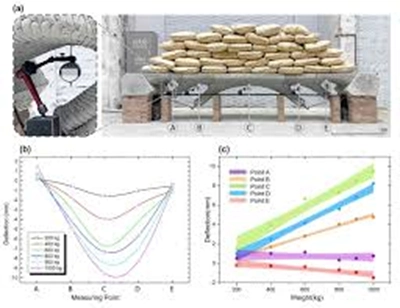Span Deflection Load Test

SPAN DEFLECTION LOAD TEST AS PER IRC: SP 51-2015
A Span Deflection Load Test is a procedure used to assess the flexural capacity and overall condition of a bridge structure by applying a known load to a specific span and measuring its deflection. This test helps determine if the bridge can safely handle the expected loads and if there are any signs of excessive deflection or permanent deformation.
Here’s a more detailed explanation:
Purpose:
- Assess Flexural Capacity: The test evaluates the bridge's ability to withstand bending stresses caused by the applied load.
- Check for Deflection: It measures the amount of bending or sag (deflection) the bridge undergoes under load.
- Identify Potential Problems: It can reveal issues like excessive creep deflection, material defects, or structural deterioration.
- Confirm Elastic Performance: The test verifies that the bridge's behavior under load is within the elastic range, meaning it recovers its original shape after the load is removed.
- Evaluate Safety: It helps determine if the bridge is safe for the intended traffic loads.
Procedure:
- Load Application: A specific load, often a percentage of the bridge's design live load, is applied to the span under test.
- Deflection Measurement: Deflections are measured at various points along the span, typically using dial gauges or total station instruments.
- Load Increment and Holding: The load is applied incrementally, and the deflection is measured at each stage. The maximum load is often maintained for a certain period, like 24 hours.
- Unloading: The load is then gradually removed in the reverse order, and the deflection is measured during unloading.
- Data Analysis: The measured deflections are compared to acceptable limits and design requirements.

